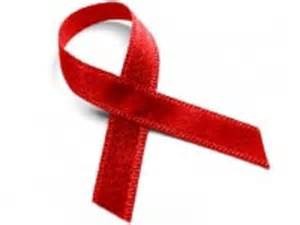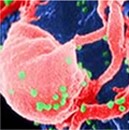 HIV/AIDS
HIV/AIDS
A Worldwide Epidemic

AIDS was first reported in the United States in 1981 and has since become a major worldwide epidemic. It is the most catastrophic disease in modern history. It has become the world's deadliest infectious disease and is threatening to eliminate up to a sixth of the world's population. AIDS is caused by the human immunodeficiency virus, or HIV. By killing or damaging cells of the body's immune system, HIV progressively destroys the body's ability to fight infections and certain cancers. People diagnosed with AIDS may get life-threatening diseases called opportunistic infections. These infections are caused by microbes such as viruses or bacteria that usually do not make healthy people sick.
 Scientists identified a type of chimpanzee in West Africa as the source of HIV infection in humans. They believe that the chimpanzee version of the immunodeficiency virus (called simian immunodeficiency virus, or SIV) most likely was transmitted to humans and mutated into HIV when humans hunted these chimpanzees for meat and came into contact with their infected blood. Studies show that HIV may have jumped from apes to humans as far back as the late 1800s. Over decades, the virus slowly spread across Africa and later into other parts of the world. We know that the virus has existed in the United States since at least the mid- to late 1970s.
Scientists identified a type of chimpanzee in West Africa as the source of HIV infection in humans. They believe that the chimpanzee version of the immunodeficiency virus (called simian immunodeficiency virus, or SIV) most likely was transmitted to humans and mutated into HIV when humans hunted these chimpanzees for meat and came into contact with their infected blood. Studies show that HIV may have jumped from apes to humans as far back as the late 1800s. Over decades, the virus slowly spread across Africa and later into other parts of the world. We know that the virus has existed in the United States since at least the mid- to late 1970s.
 Video- Documentary 1987 "Patient Zero"
Video- Documentary 1987 "Patient Zero"
